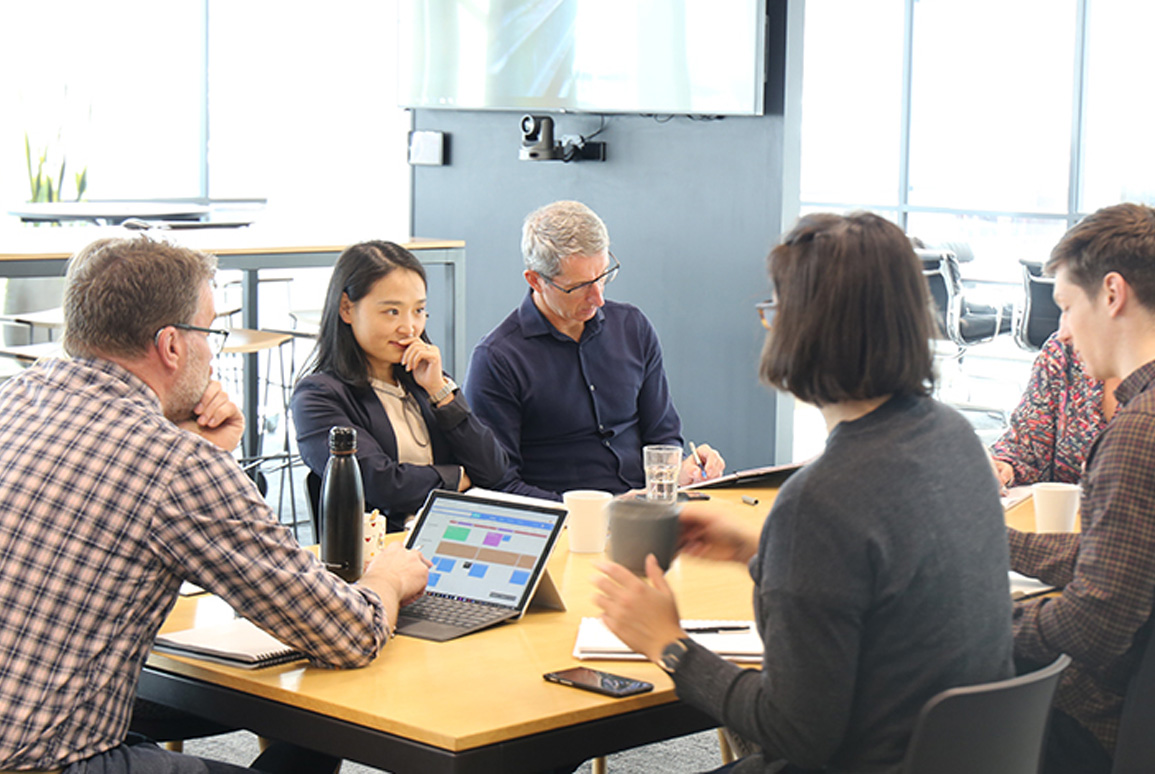An Attitude of Innovation
29 March 2021
Embracing innovative technologies is a given at Boffa Miskell – and we're doing it with greater ease and enthusiasm than ever before.

Integrating a multi-disciplinary consultancy
Boffa Miskell is more than a landscape architecture firm. Over the course of nearly 50 years, planning and ecology consultants have been added; along with urban designers, biosecurity experts and technical service (GIS, Visual Simulation and Drone Services). Ensuring that over 200 consultants (in seven offices across the country) can collaborate with each other, and with clients and external project partners, is the main driver of Boffa Miskell’s use of technology.
The problems our clients are asking us to solve have an increasing complexity,” says landscape architect Frazer Baggaley. “We are constantly evolving our use of digital tools to develop more integrated design processes.
Many projects now start with base data from GIS, which can be pulled into design programs, like Revit or Infraworks; but the same base data can also be used by ecologists, landscape planners or planners. Working with this data in a connected environment fosters better collaboration through shared understanding and information.
BIM can be used to iteratively test whole-of-life costs, environmental impacts such as carbon sequestration, and other project performance measures with good data to both communicate and evaluate design options with the client and team. These digital platforms link in workflows to various modelling programs and visual simulations, and help planners or ecologists in understanding the impact of the proposed design as it evolves on the surrounding environment; while REVIT enables integration with crucial external project partners, like architects, engineers or construction companies involved in the documentation and delivery.
“Boffa Miskell has a reputation of being easy to work with and skilled collaborators,” says Frazer. “Our development of the tools and technology to support this collaborative approach has ensured that we can remain specialised in what we do.”
“In a world where there is an increasing number of large ‘one stop shop‘ multinational engineering firms, our adoption of technology focuses on collaboration; and that allows us to keep our relatively small size, and focus on top-quality work without losing our place at the table.”
Better Connection = Better Collaboration = Better Results
Technical Leader for Design Michael Hawes says that the biggest leap forward hasn’t just been about expanding design opportunities through technology. It’s been in using technology to facilitate better collaboration.
“The use and accessibility of drones, and LIDAR and point clouds are a massive leap forward, in providing data,” Michael says. “But programs like Miro and BIM360 are even more important as they enable us to work more collaboratively with others and realise that shared potential”
Flipping through pages of finished plans and reading reports to provide feedback and make approvals is increasingly out of sync with the more dynamic and collaborative workflows that are evolving in the industry.
“There’s an expectation – and indeed value – in the client, project team and increasingly the community being able to see and interact with a design as it develops,” he continues. “Static visual simulations have become business as usual; and we have the ability for the client and end-users to get involved in real-time and in more immersive interfaces such as VR”
Cloud-based platforms mean that job files can be accessed by multiple users at the click of a button, and the project team can see design changes, and their effects, immediately.
“Programs like Miro – which is more about collaboration and sharing of ideas, rather than strictly design tools – allow our clients (who are often creatives themselves) to be more closely involved earlier, and more deeply, as ideas develop,” Michael explains. “And that means the process becomes a two-way problem-solving relationship – our design expertise and their knowledge of the place and commercial objectives. The result is inevitably a better solution because we’ve arrived at it collaboratively.”
Bringing people together: the internal upside of COVID-19
All of New Zealand went into lockdown on 25 March 2020; less than a month after the country recorded its first community case of the virus. It was imperative to keep company operations moving forward, and to support staff wellness, through internal connectivity. In response Boffa Miskell’s IT staff quickly rolled out Teams as the primary program for communication.
“We’d been talking about using Teams since around 2019,” says IT manager Andrew Scrivens. “But there was an unconscious hesitance to uptake, simply because we didn’t need that technology to get our jobs done. But almost overnight, when the country went into lockdown, we did. Teams enabled us to continue collaborate on projects even though we all worked from home – and just as important, we were able to support each other through a completely uncharted experience. That need for connection meant any resistance about adopting a new piece of software went away.”
The days of Virtual Drinks at 5pm on Friday are (mostly) a thing of the past, but the staff’s confidence to integrate new technology and willingness to accept changing ways of working has remained. And inter-office collaboration is stronger than ever.
“The company-wide evolution in mindset is a real silver lining to the COVID experience,” says Andrew. “We’ve had a couple of mini-lockdowns over the past year, and the staff is able to take those changes in stride, as they have continued to utilise teams and other online workspaces as usual working practice. Beyond that, we have become more nimble in our attitude to new technology; people are very happy to to give a new app or program a trial and see if it’s something we want to adopt more broadly.”
For further information please contact Frazer Baggaley

